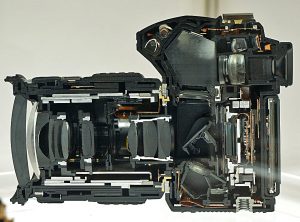Most digital cameras today allow their users to take high-quality pictures. A dSLR camera is for you if you are looking for true excellence. Almost any digital camera available on the market today will let you work with low light, portraits or take great travel photos. A dSLR camera will take the photos much quicker, will give you more flexibility when it comes to the settings and will let you unleash your creativity. Best of all, your new  dSLR is likely to have settings that you can quickly adjust instead of post-editing a photo in Photoshop in the way you would have to do it with any other camera.
dSLR is likely to have settings that you can quickly adjust instead of post-editing a photo in Photoshop in the way you would have to do it with any other camera.
If in the past you have used a simple point-and-shoot camera, then you are already familiar with the advantages of being able to see your pictures on a large screen right after you take them. Despite the comparisons that most people want to learn about before they buy a dSLR camera, a dSLR is much more than just a one-step upgrade. It is very different from both film SLRs and from digital cameras.
When you use a non-SLR device, your pictures will sometimes be different from what you think you will get before you press the trigger.
In theory, the screen on the back of a simple digital point-and-shoot camera should s how precisely what will end up in your picture because the same digital sensor that captures the image produces the picture on the screen on the back of the camera. However, in reality an LCD display may be very hard to use in bright sunlight. Also, when you hold your camera at the length of your arm, the screen will simply feel too small, as if you are trying to judge a future picture by looking at it through a small postage stamp.
how precisely what will end up in your picture because the same digital sensor that captures the image produces the picture on the screen on the back of the camera. However, in reality an LCD display may be very hard to use in bright sunlight. Also, when you hold your camera at the length of your arm, the screen will simply feel too small, as if you are trying to judge a future picture by looking at it through a small postage stamp.
The view through the viewfinder of a non-SLR device may feel even worse than the LCD screen on the back of a digital point-and-shoot camera. Many of such cameras have electronic viewfinders that use the actual light to form the image they produce. The issue is that such an electronic viewfinder may simply not have enough pixels to accurately represent the future picture. If the camera or the subject is in motion, then things are likely to get even worse and become blurred and ghosted. Also, electronic viewfinders do not work well when the light levels are low.
